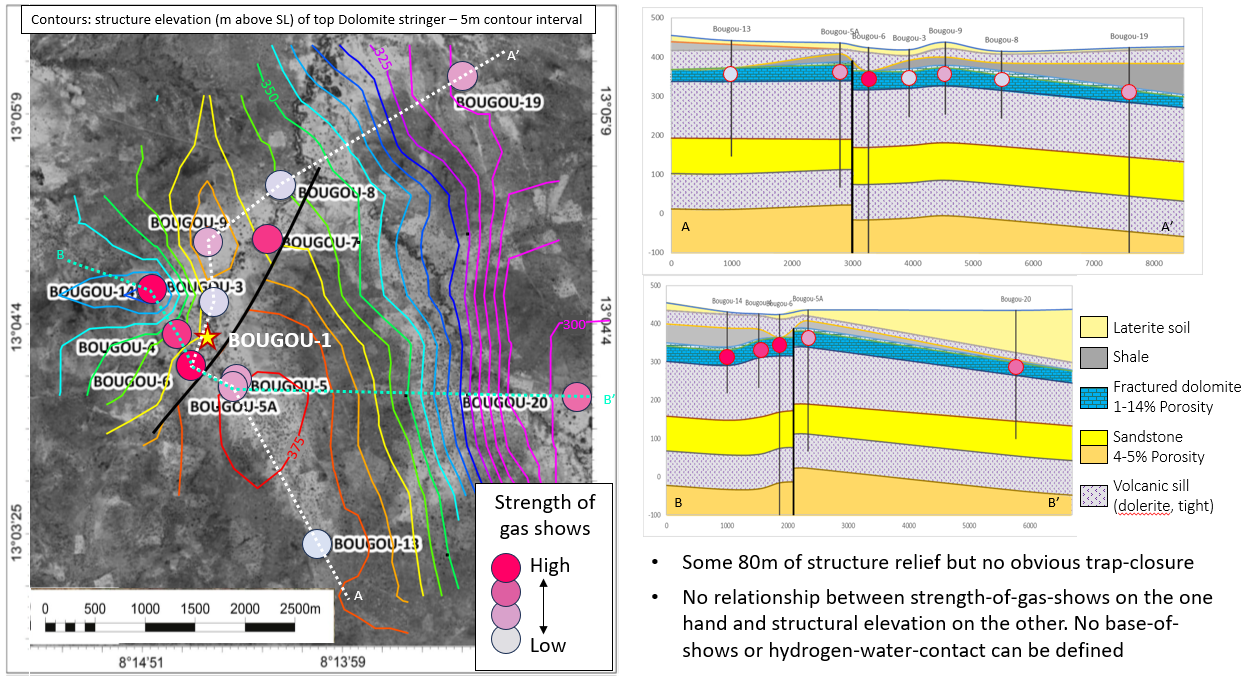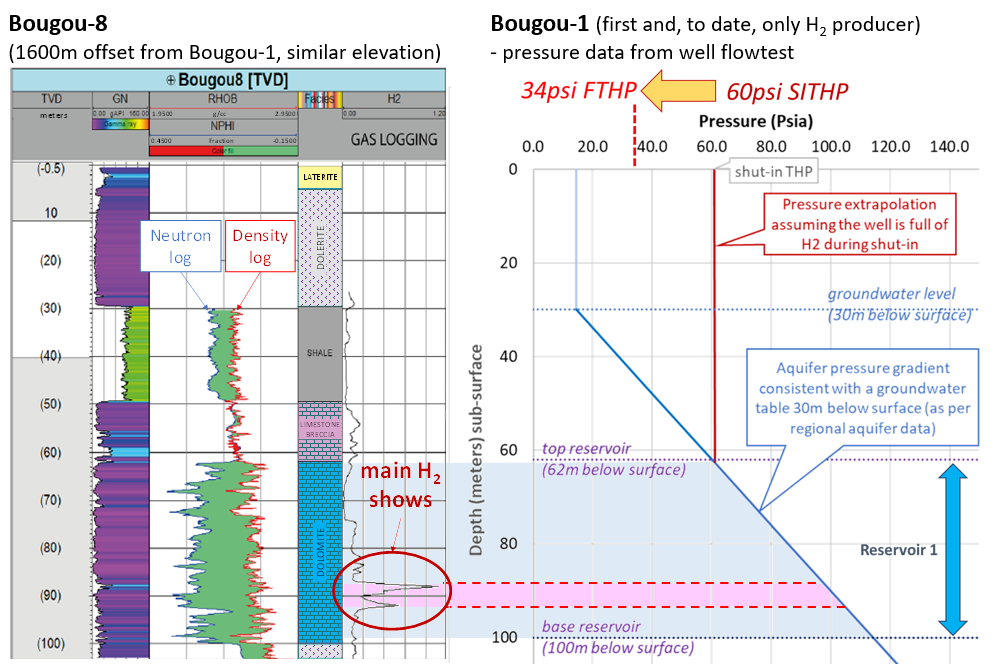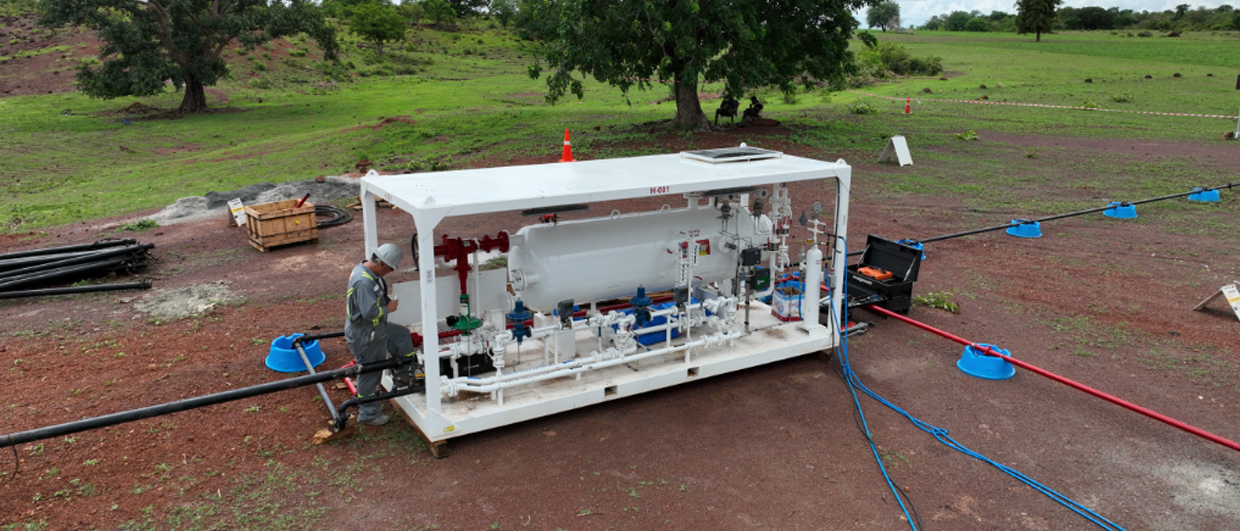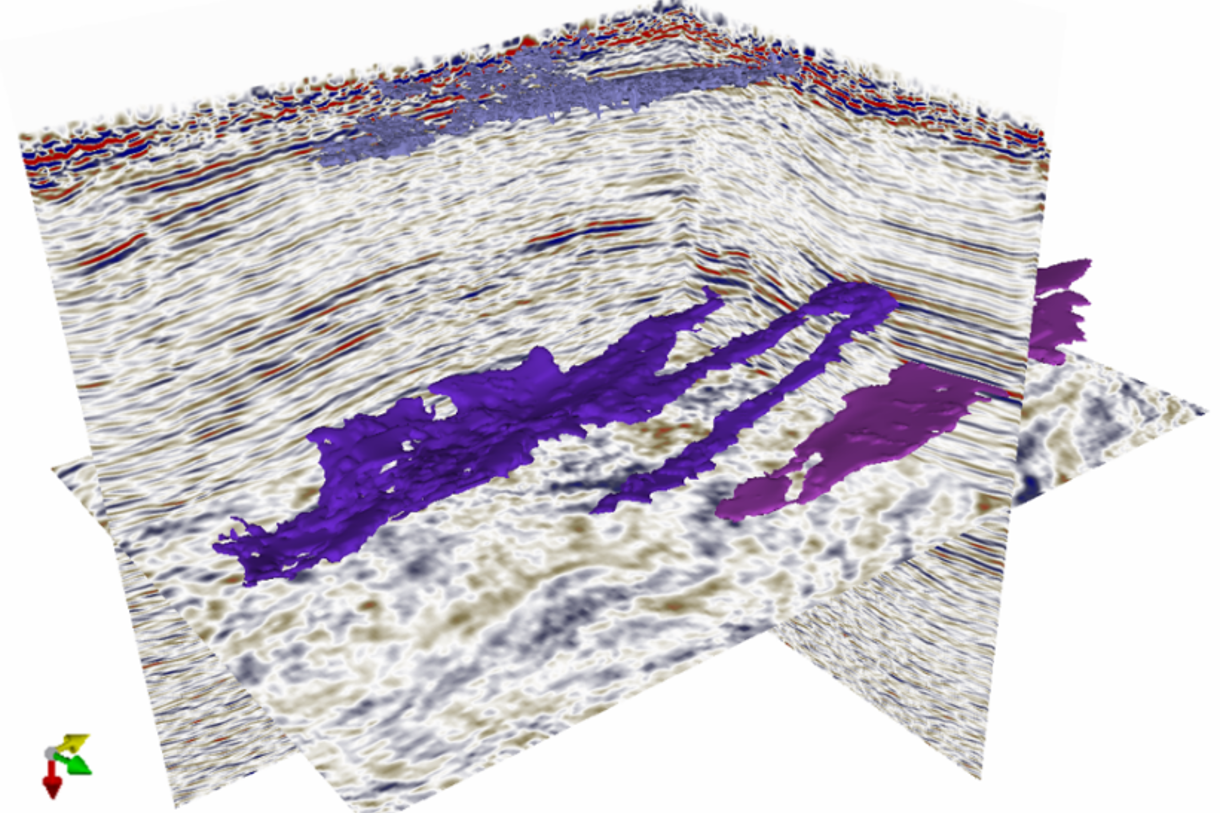The Bourakebougou (Bougou) field in Mali has made headlines as the “world’s first producing hydrogen field”. It has been described as a “large accumulation of hydrogen gas in carbonate and sandstone reservoirs ranging from 30 to 1,500m depth, with volcanics sills (dolerites) acting as caprocks”.
A closer examination of data from the field, however, raises doubts with regards to how much free hydrogen gas has actually been proven. Other than the flow of relatively small amounts (between 150 to 1,500m3/day) from Bougou-1, producing from the shallowest reservoir zone in the field, no other industry-standard evidence of free gas in the reservoir such as downhole gas samples or pressure points demonstrating gas gradients, have been publicly released.
In a recent paper in International Journal of Hydrogen Energy, Jos Bonnie, Ramon Loosveld and I offer an alternative interpretation of Bougou as a seepage system of hydrogen dissolved in formation water with only small, localised gas pockets. Here is the supporting evidence for this alternative interpretation.
First, there is no link between occurrence of mud gas shows in wells and structural elevation, despite some 80m of vertical relief on the structure (see below). No base-of-shows can be defined. A continuous hydrogen gas cap across all wells on the structure of at least 80m high would result in crestal reservoir pressure close to or in excess of lithostatic pressure.

Second, using pressure data from the Bougou-1 well, notably the 60psi Shut-In Tubing-Head Pressure (SITHP), and intercepting this with an aquifer-pressure-gradient based on regional groundwater data, indicates that most of the reservoir must be in the water leg (see below).
Finally, across the prospective reservoirs, including the intervals with mud gas shows, the neutron log deflects towards higher porosities whilst the density log also reads high. This log response is suggestive of water rather than gas filled pore space. If pores would have been filled with hydrogen gas, it would result in exactly the opposite effect: a lower neutron porosity due to the low Hydrogen Index of gaseous hydrogen especially at low pressure and a lower density due to the low apparent density of hydrogen gas.

Whilst most of the hydrogen gas shows appear to come from reservoirs with an aqueous pore fill, some small crestal hydrogen gas caps or pockets may locally exist. The accidental Bougou-1 producer may have intercepted one of these pockets. Gas caps of a few meters high and 1 to 2km in radius would contain enough volume to sustain the small Bougou-1 hydrogen production for several years.
Reportedly, the shallowest reservoir zone in Bougou, where the field’s only hydrogen well is producing from, is an important regional aquifer in which over the years, hundreds of water wells may have been drilled. These wells may have subsequently lowered the groundwater table and hence, depleted aquifer pressures significantly. I speculate that this pressure depletion may have triggered the formation of small, localised gas pockets by releasing hydrogen from aqueous solution.
The “emblematic case of Bourakebougou” is often quoted as key evidence that natural hydrogen gas can be trapped in significant quantities in the subsurface and for that reason, it is important to get clarity on the nature of hydrogen in Bougou. We urge the operator of Bourakebougou to provide full disclosure of all key subsurface data required to determine pressure and phase of hydrogen in the various reservoir layers within the field.





